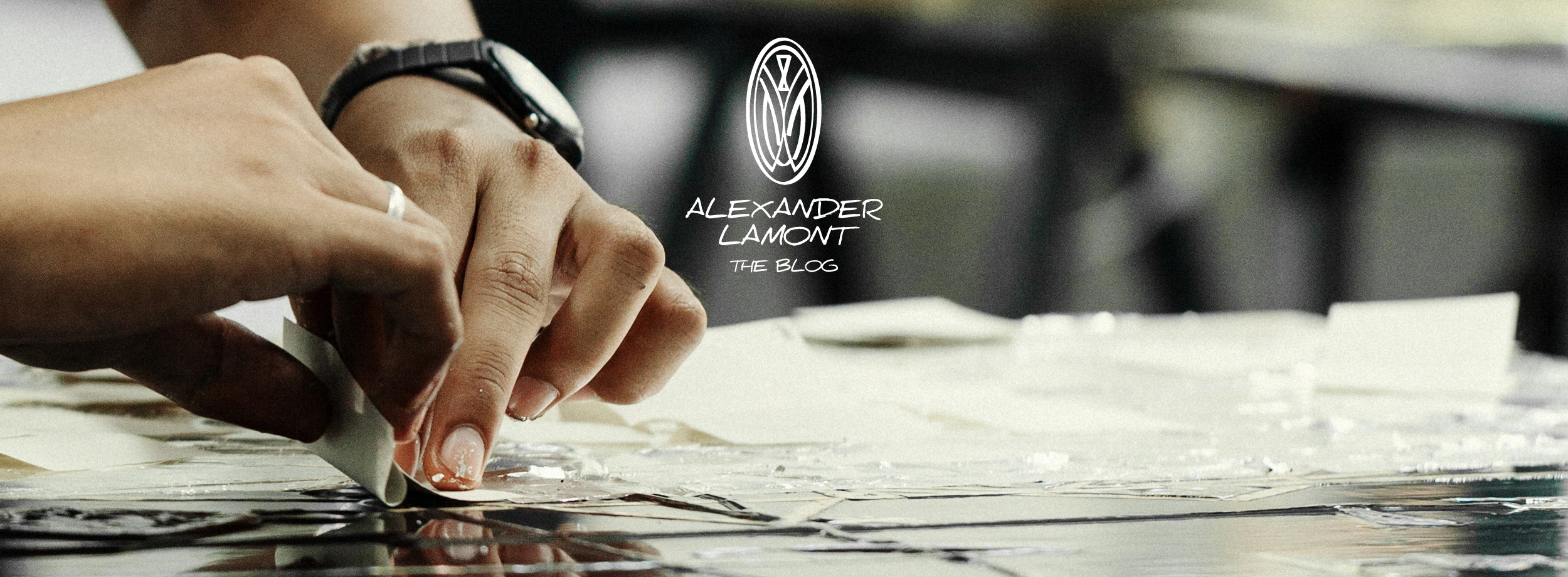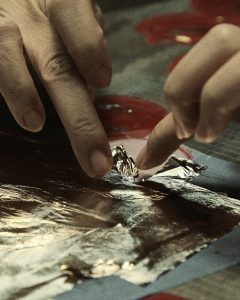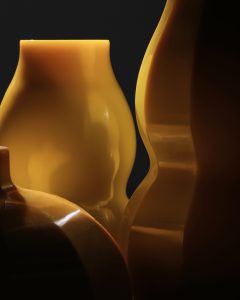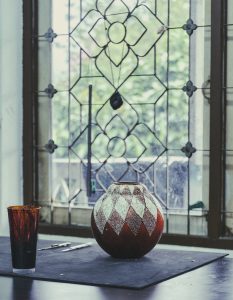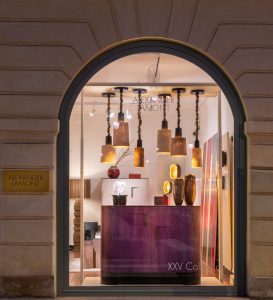What we see is a constantly changing world of light and colour and texture. Any visual artist will tell you that the first thing needed is to learn to see. Things are not always as they appear, and acquainting oneself with an understanding of form and surface brings great rewards to applied skills in creativity and selection.
I have worked intensively within the world of handmade objects – from fine antiques to simple folkart. Everyday in the workshops I am looking at progress on hundreds of items. Having a sophisticated ‘palette’ gives me the sense sometimes of being able to ‘see through things.’ Things jump out and are seen clearly for their uniqueness and quality. One incredibly enjoyable aspect of my job as Creative Director of Alexander Lamont, is when I am called upon to find beautiful objects in beautiful places. For our upcoming exhibition, ‘The Eye of Alexander Lamont” at our Gaysorn shop in Bangkok, I have put together a strong group of fragments, antiques and furniture; many of them mounted carefully to elevate their attributes. These objects were found in China, Japan, Indonesia, Cambodia, Burma and Thailand and they exude the properties that I am often trying to create in my own designs; the feeling of completeness as individual objects with personality and charisma.
Below are just a few highlighted objects that will be part of the exhibition.
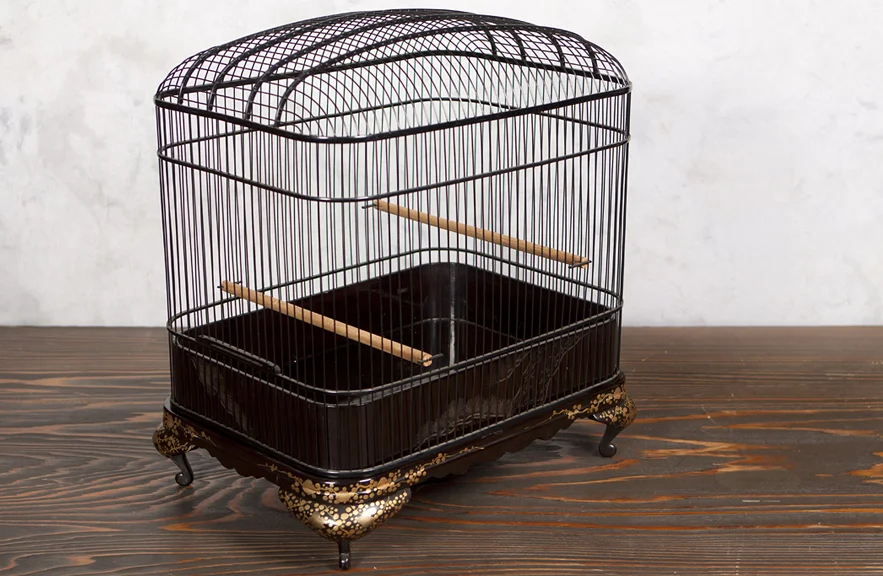
A piece chosen for its courtly and engineered beauty. A rare and intricate Japanese gilded lacquer birdcage made from wood that has been lacquered and decorated with makiye pure gold powder. 19th century.
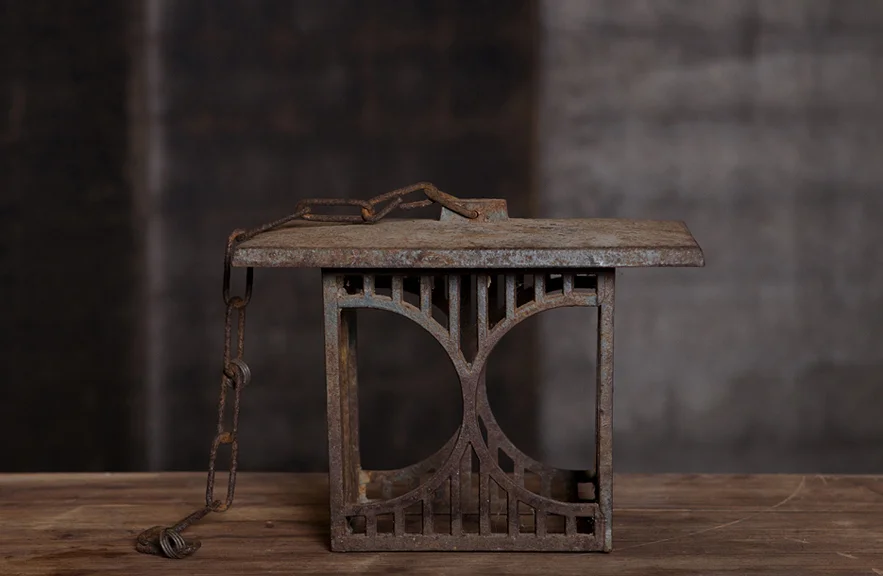
A piece chosen for its weathered patina and strong linear form. Cast iron candle lantern from Japan. Japanese gardens are normally small and carefully manicured to show elements of water, moss and stones. Such a simple lantern would add a glimmering light during the evening and be protected from rain. Circa. 1920.

These were chosen for the burnished wood and worn lacquer work and shell inlay that although are in excellent condition, emit a tender and tactile softness from the decades of careful use. A Pair of Japanese hibachi that were used throughout the house to provide warmth and tea to the user. Now often used as exquisite planters. Late 19th century.
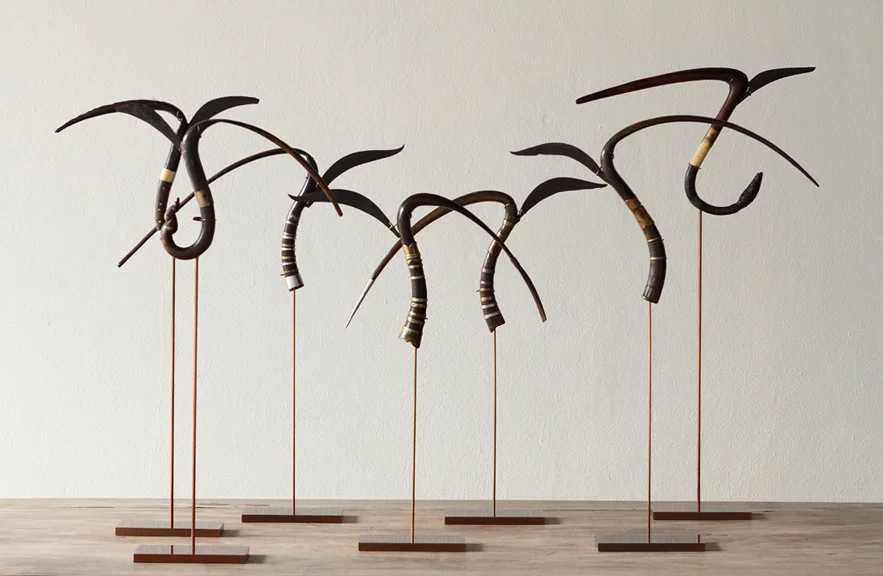
I didn’t see rice-cutters, but I did see birds, their wings and forms falling in the air. Elevated on bronze stands, these Cambodia rice-cutters tended to be made by the farmer so there is a great variety of quality and workmanship. I am lucky to have a friend who lives in Phnom Penh and scours the markets every week and then spends up to a day on every piece cleaning and polishing. The restoration and the mounting take an ordinary functional item and create a sensual sculptural form that flies above the paddy fields. 20th century.
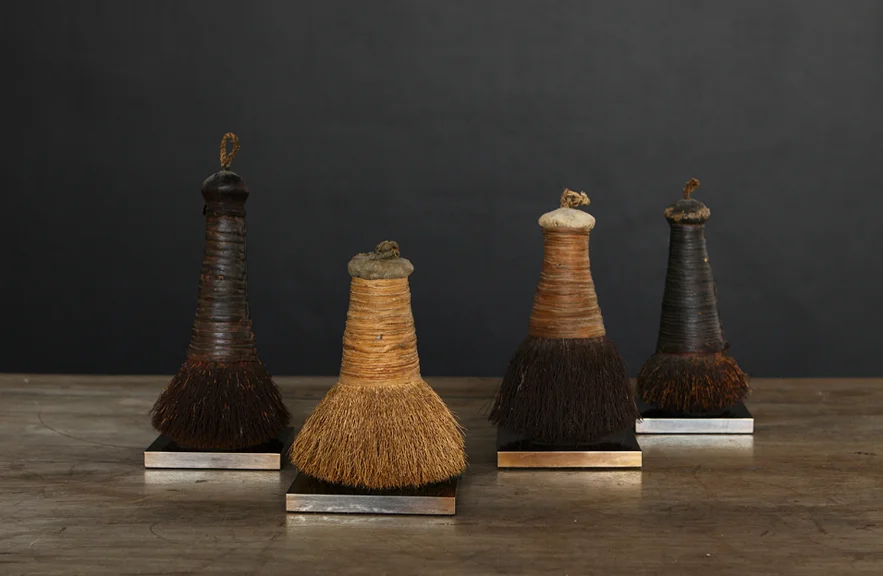
Another beautiful group of sculptural items that have a varying range of tones and textures. From Korea, these brushes are in fact used for scrubbing the large cast iron pans used to make Korean hot pots. To me they exhibit a beautiful form and are more interesting through having been used for domestic purposes and yet to have survived looking even better. 20th century.
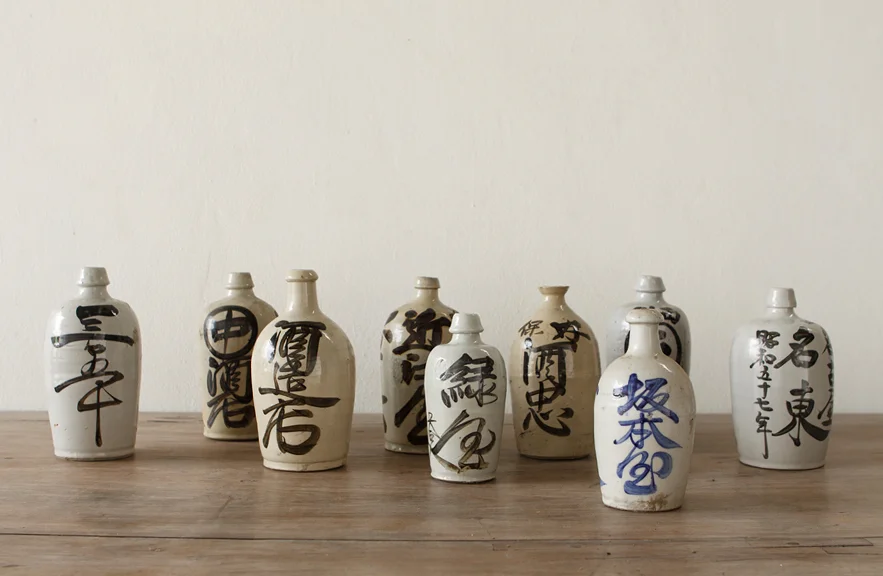
Another group that had a subtle anthropomorphic curvature and wonderful freedom in the script. Sake bottles from Japan. 20th century.

This was an idea I had after finding an unusually large and beautiful group of wooden painted rice boxes in Java. Rice would be served on the table in these boxes and the lid put on to keep it hot. Over time the pain has worn away in different ways to create a gorgeous painterly patina. But these boxes were sometimes difficult to display. Then I saw the antique cabinet and devised an entire ‘installation’ whereby I would present the collection of boxes in its own presentation box. The final result is a wonderfully geometric and textured dark cabinet of light forms. 20th century Java.
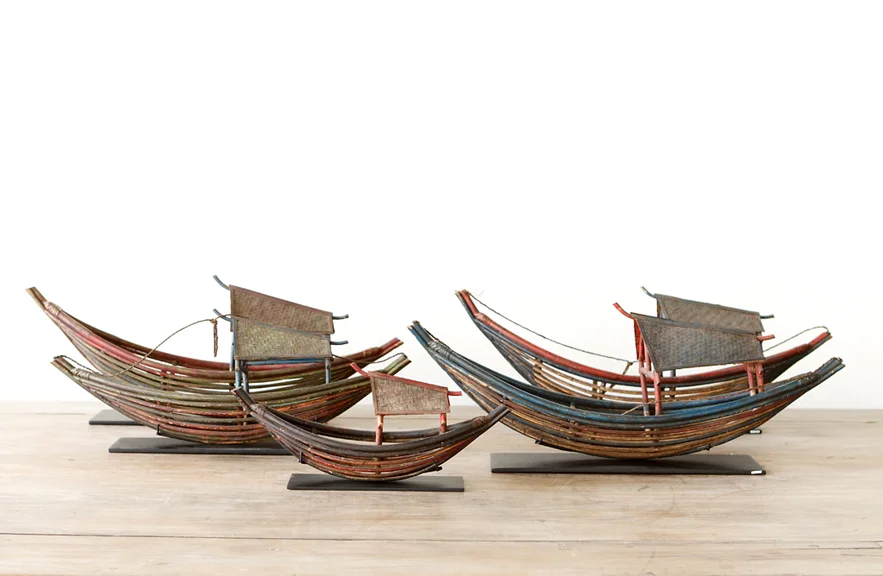
The sea is a romantic companion to many of my buying trips. Living in Hong Kong for years, my wife and I looked out over the South China Sea and the islands towards Macau. The seas around the islands of Japan, Indonesia and the Philippines are enriched with a history of spice and trade that I enjoy dwelling on in books. But it is rare to find objects that relate to the sea and this group of simple painted vessels from Sumatra has a lovely movement and colouring. 20th century.
‘The Eye of Alexander Lamont’ is an exhibition of rare and decorative objects and furniture curated by Alexander Lamont. Gaysorn, 3rd floor from 5th June to 30th June 2015.
